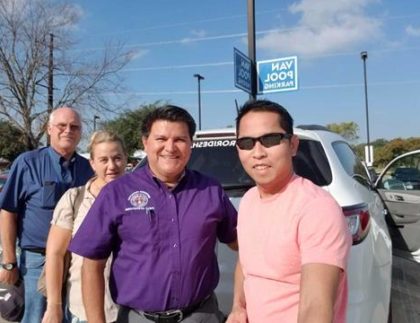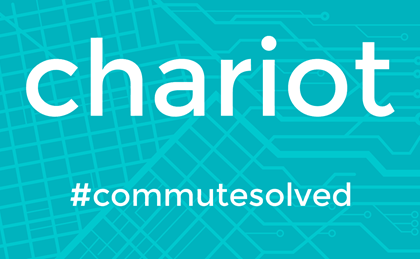Cuong works for the city of Austin at the One Texas Center just south of downtown, however, he lives in northwest Austin. This can be quite the commute but Cuong has made the best of it. He vanpools to work using the Rideshare program from Capital Metro and he shifts his schedule so he is not commuting to work during peak traffic – 7 to 9 a.m. and 5 to 7 p.m.
Cuong meets with his carpool buddies, Greg, Jennifer, and Sergio at 5:50 a.m. at Lakeline Station – where there is reserved vanpool parking – to start their commute to work. They arrive to work by 6:30 a.m.
Vanpooling allows Cuong to reduce his carbon footprint, and number vehicles on the while saving money and tear and wear on his vehicle “With the federal and city subsidy, my commute almost does not cost me anything,” he said.
Cuong enjoys his commute because it shortens his drive time, it is less stressful than commuting alone, and he enjoys the people with which he commutes. I have a great group of vanpool buddies to joke around with during the commute time – what’s not to like?”
The biggest challenge with his commute is sticking to the same schedule. Since Cuong is the vanpool driver her has to be dependable and punctual. His advice is not to be afraid of sticking to a schedule because you will adjust after a couple weeks.
Thanks Cuong, you and your carpool buddies are helping the region fight traffic and pollution with your commute solution!
 Over the past few years, you have likely seen the tiny white cars with Car2Go branding traveling around town. Carsharing companies like Car2Go and Zipcar have been operating in the region for a number of years and could help you out if you do not have access to your own vehicle. Carsharing is a vehicle rental model that allows people to rent vehicles for short periods of time, often by the hour. This could be especially useful for people that commute to work without their personal vehicle because it gives you more flexibility to run errands during your lunch break or quickly get home if something unexpected comes up.
Over the past few years, you have likely seen the tiny white cars with Car2Go branding traveling around town. Carsharing companies like Car2Go and Zipcar have been operating in the region for a number of years and could help you out if you do not have access to your own vehicle. Carsharing is a vehicle rental model that allows people to rent vehicles for short periods of time, often by the hour. This could be especially useful for people that commute to work without their personal vehicle because it gives you more flexibility to run errands during your lunch break or quickly get home if something unexpected comes up.
 Currently, Car2Go operates in Central and North Austin while Zipcar operates in Central Austin and San Marcos.
Currently, Car2Go operates in Central and North Austin while Zipcar operates in Central Austin and San Marcos.
Consider learning more about the feasibility of carsharing for your situation, or share the information with someone you know who is hesitant to bus or vanpool because they want the ability to leave work quickly.
For just over a year now, Chariot has been providing Austin with what they term “micro-transit,” Chariot offers a mix of fixed-route mass-transit and on-demand ridesharing and they could help you get to work more sustainability than driving yourself which can to congestion and can harm the environment.
Chariot has three different public transit-like routes where individuals can reserve a seat on a van using a smartphone app; an enterprise service for companies to get their employees to and from work; and a charter vehicle program.
Currently, all of Chariot’s public routes are operating between south Austin and downtown Austin. Chariot charges $3.50 per ride or $95.00 for a monthly pass. Visit Chariot
Victor works in downtown Austin for Travis County but lives in Leander. This is a 50+ mile per day commute. This could be a commuting nightmare; however, Victor has found a way to make it work without relying on a car.
For the past six years, Victor has commuted to work via bike, train, and/or bus. He says,
“Commuting to work has allowed me to be more active outside, and at 44 years old, I am stronger than ever riding my bike 45-65 miles a week.”
With his long commute, Victor has learned a lot,
“I would suggest for those thinking about commuting is to find what options work for you, have a backup plan, begin slowly, and when riding your bike tough out the weather and be defensive.”
Great advice from Victor! He has found a way to make his daily trip to and from downtown Austin without needing to drive alone every day.


